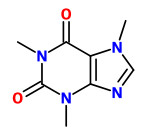Benutzer-Werkzeuge
Cola acuminata (Beauv.) Schott & Endl. - syn. Sterculia acuminata P. Beauv. - Malvaceae - cola (nut), abata cola, Abata Kola, Kolabaum
Tree of the tropical parts of West Africa (Cameroon to Angola).
„In Nigeria C. acuminata flowers abundantly in the dry season from December to February, and to a lesser extent in August and September. Fruits are harvested from April to June. Not one of 53 flowering herbarium specimens of C. acuminata had been collected during April-May …
In southern parts of West Africa, the most commonly consumed species is C. acuminata and C. nitida is preferred in northern parts. For example, C. acuminata is the preferred species in western Cameroon and its trade is limited to this region. C. nitida, however, is produced though generally not consumed in this region; what is collected is traded to the North.“
http://carpe.umd.edu/Documents/2001/report-tachieobeng_brown2001.pdf
„Coca-Cola syrup does not contain any kola nut extract. Since no kola extracts are present in the recipe, the primary taste of Coca-Cola comes from vanilla and cinnamon with trace amounts of orange, lime and lemon and spices such as nutmeg.“ https://en.wikipedia.org/wiki/Coca-Cola_formula
Cola seeds contain xanthines with caffeine as major compound. The average concentration of caffeine found in C.acuminata seeds was 1.1% (C.nitida 1.3%, C.anomala 0.7%).
[Purine alkaloids and phenolic compounds in three Cola species and Garcinia kola grown in Cameroon., Niemenak, N., Onomo, P.E., Lieberei, R., Ndoumou, D.O., South African Journal of Botany, 74(4), 2008, 629-638]
Dried mature cola nuts purchased from three major markets in Nigeria (colour white, red and pink) showed caffeine contents between 1.0-1.1% for C.nitida and 0.9-1.0% for C.acuminata.
[The quality of Nigerian kola nuts., Atanda, O.O., Olutayo, A., Mokwunye, F.C., Oyebanji, A.O., Adegunwa, M.O., Afr J Food Sci, 5, 2011, 904-9]
„The seeds are chewed as a stimulating narcotic, beverage could be made by boiling powdered seed in water, and also a cough syrup made from the juice extract (Tachie-Obeng and Browns, 2004, http://carpe.Umd.Edu/Documents/2001/report-tachieobeng_brown2001.pdf). The stem and twig wood is used for chewing stick. It can also be used as flavoring in soft drinks e.g. coca-cola. Several species of cola nut have been recognised in Nigeria. There are about three sub genera that are accepted and cultivated. They are often refers to as edible cola but only two are widely cultivated namely Cola nitida (Vent.) Schott and Endl and Cola acuminata (P. Beauv.) Schott and Endl they are the two economically important members of the cola genus. They are bitter-tasting nuts known conventionally as Kola nuts. These two species are the true cola nuts. In Western Nigeria, cola nut ranks very high among agricultural cash crops in importance from which the bulk of our revenue can be derived.“
[Socio-economic Contribution, Marketing and Utilization of Edible Kolanut (Cola acuminata and Cola nitida) to Rural Women Livelihood in Abeokuta, Nigeria. Adedokun, M. O., Soaga, J. A. O., Olawumi, A. T., Oyebanji, O. O., Oluwalana, S. A., International Journal of Molecular Ecology and Conservation, 2(1). 2013] http://biopublisher.ca/index.php/ijmec/article/html/505
„The result of phytochemical analysis showed that Cola acuminata has more alkaloids (2.22%), tannin (6.46%) and saponin (8.06%) than Cola nitida. The phenol contents of the two kola nuts were the same range 0.27%, the flavonoid were in the range of 0.12-0.14%.“
[Proximate and phytochemical of Cola nitida and Cola acuminata. Dewole, E. A., Dewumi, D. F., Alabi, J. Y., Adegoke, A., Pakistan journal of biological sciences: PJBS, Vol.16(22), 2013, 1593-1596]

Köhler,F.E., Medizinal Pflanzen, vol.3 t.20 (1890)
http://plantgenera.org/species.php?id_species=262851

